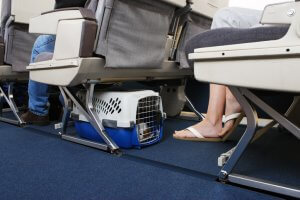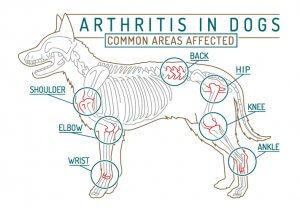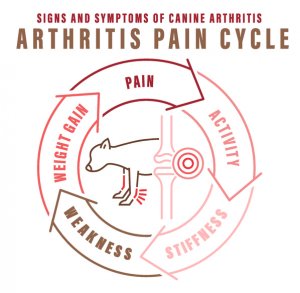At the Animal Medical Center of Streetsboro, we have seen firsthand the stress and anxiety that both pets and their owners experience when traveling. If you plan to travel with your pet where they need to fly with you, there are many things to consider to ensure they are safe and well cared for.
With proper preparation and planning, however, you can make the journey easier for you and your pet. Here are some tips to help you get your pet ready for boarding and ensure a safe and enjoyable trip.
Visit Your Veterinarian Before Traveling
Before embarking on any journey with your pet, scheduling a visit with your veterinarian is important. They can perform a thorough check-up and ensure your pet is healthy for travel. They can also provide necessary vaccinations and medications for your pet’s specific needs.
This is also a good time to discuss any potential health concerns or behavior issues during travel.
What to Consider When Travelling By Air
If you are traveling by air, research the airline’s pet policies policies and requirements. Some airlines have restrictions on the size and breed of animals they allow, as well as specific rules for carriers and documentation.
For example, some airlines will require a health certificate from your veterinarian within a certain time frame before the flight. Knowing these requirements beforehand is important to avoid any last-minute stress or complications.
Choose the Right Pet Carrier
 Choosing the right carrier for your pet when traveling by air is essential. The carrier should be big enough for your pet to stand, turn around, and lie comfortably. It should also be well-ventilated and secure. Typically, airlines will require the carrier to be hard or soft-sided. On many airlines, for the pet to be brought on board, they must fit in the carrier under the seat and remain in the carrier for the duration of the flight. Larger pets who do not meet these requirements will need to be transported through the airline’s cargo.
Choosing the right carrier for your pet when traveling by air is essential. The carrier should be big enough for your pet to stand, turn around, and lie comfortably. It should also be well-ventilated and secure. Typically, airlines will require the carrier to be hard or soft-sided. On many airlines, for the pet to be brought on board, they must fit in the carrier under the seat and remain in the carrier for the duration of the flight. Larger pets who do not meet these requirements will need to be transported through the airline’s cargo.
Some airlines may also have breed restrictions for the cabin or the cargo hold due to the pet’s ability to handle the flying conditions. Other airlines have banned breeds such as pit bulls from flying at all, so be sure to check the guidelines of your specific airline.
If your pet is anxious or not used to being in a carrier, it’s important to acclimate them to it before the trip. This can help reduce their stress levels during travel. Tips for acclimating them to the carrier include:
Include their familiar items, such as their favorite blanket or toy, inside their carrier
Gradually increasing the amount of time they spend in the carrier each day
Taking short trips in the car with them in the carrier to get them used to movement and noise.
Have a Plan for Layovers and Connecting Flights
If your flight includes layovers or connecting flights, make sure to have a plan for your pet during these times. Some airports have designated pet relief areas where you can let your pet out of their carrier to use the bathroom and stretch their legs.
Alternatively, you may want to consider booking a direct flight to avoid layovers altogether.
Pack the Essentials for Your Pet
Just like you would pack for yourself, make sure to pack all of your pet’s essentials for the trip. This includes food, water, treats, medication, and important documents such as vaccination records.
Packing a favorite toy or blanket for your pet is also a good idea to help them feel more at ease during the journey.
Is Flying Stressful for Pets?
For many pets, flying can be a stressful experience. The unfamiliar sights, sounds, and smells can cause anxiety and fear. It’s important to be aware of your pet’s behavior during the journey and to provide them with comfort and reassurance as needed.
If you are concerned about your pet’s stress levels, talk to your veterinarian beforehand about potential calming techniques or medications that may help.
Know Your Pet’s Limits During The Trip
 While bringing your pet along for your vacation activities may be tempting, it is important to consider their limits. Some pets may not do well in crowded or unfamiliar environments, so give them breaks and time to rest when needed.
While bringing your pet along for your vacation activities may be tempting, it is important to consider their limits. Some pets may not do well in crowded or unfamiliar environments, so give them breaks and time to rest when needed.
It is also important to never leave your pet unattended in a car, as they can easily become overheated. If you plan on participating in activities that do not allow pets, make sure to have a plan for their care and comfort.
Be Prepared for Emergencies
Just like with any trip, preparing for potential emergencies is important. Have a first aid kit for your pet that includes bandages, antiseptic spray, and any necessary medications. It is also a good idea to research the closest emergency veterinary clinic at your destination in case of any urgent medical needs.
Consider Alternative Options
Consider alternative options if your pet cannot fly with you or the journey seems too stressful. Many pet owners find it easier to leave their pets with a trusted friend or family member or hire a pet sitter to care for them while away. This way, your pet can remain in a comfortable and familiar environment while you enjoy your vacation without worry.
Have Questions About Travelling With Your Pet? Call Us Today!
When done correctly, traveling with your pet can be a fun and rewarding experience. Following these tips and properly preparing your pet for boarding can ensure a safe and stress-free journey for you and your furry friend. Always prioritize your pet’s well-being and make decisions based on their needs.
You and your pet can enjoy a fantastic vacation together with extra planning and preparation. Contact The Animal Medical Center of Streetsboro today to schedule an appointment!
 Arthritis can occur at any age but is more commonly seen in older pets. Larger breed dogs are also at a higher risk due to their size and weight, putting more pressure on their joints. Cats, on the other hand, typically develop arthritis later in life.
Arthritis can occur at any age but is more commonly seen in older pets. Larger breed dogs are also at a higher risk due to their size and weight, putting more pressure on their joints. Cats, on the other hand, typically develop arthritis later in life. As with any medication, there is a risk of side effects. Common side effects of Solensia include vomiting, diarrhea, pain at the injection site, or itchy skin. Some possible side effects of Librela include skin irritation, vomiting, and urinary tract infection.
As with any medication, there is a risk of side effects. Common side effects of Solensia include vomiting, diarrhea, pain at the injection site, or itchy skin. Some possible side effects of Librela include skin irritation, vomiting, and urinary tract infection. Dental tartar, also known as dental calculus, is a mineralized plaque that forms on the teeth. Plaque is a sticky film of bacteria that builds up on the teeth and can eventually harden into tartar if not removed. It typically appears yellow or brown and can accumulate along the gumline and between the teeth.
Dental tartar, also known as dental calculus, is a mineralized plaque that forms on the teeth. Plaque is a sticky film of bacteria that builds up on the teeth and can eventually harden into tartar if not removed. It typically appears yellow or brown and can accumulate along the gumline and between the teeth.
